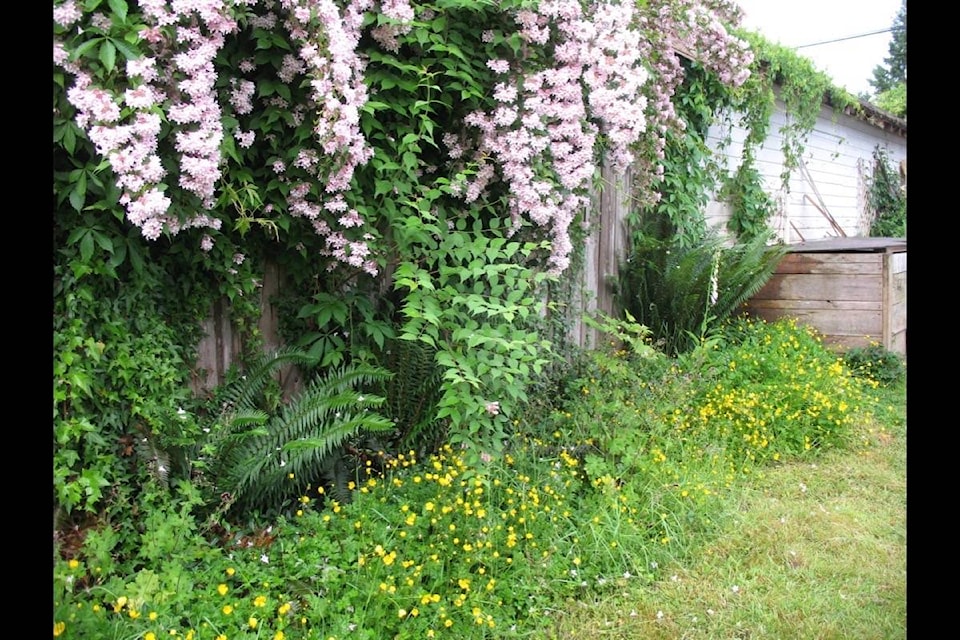Spring caught me napping. I was mentally prepared to march outside once the rains had stopped and hack down weeds before their prime. When the rain FINALLY slowed down and my stars were in alignment, I threw the hoe over my shoulder and strode into my knee-deep greenery.
Crimson clover cover crop was budding, kale, violas and camas were flowering, overwintering onions were setting seed, borage and foxglove were leafing. An odd little weed whose seeds jump out at you like hordes of fleas has spread annoyingly – I think it’s called “hairy bittercress” – those I hoed out. Apparently if you pull them out in very early spring before they set seed you can get a good jump on them. That would be during the rain.
Dandelions were blooming.
Then I noticed bees checking out the dandelions and kale flowers so, given all the hype about dwindling bee colonies, I decided to leave these plants alone, at least until they began to set seed. I wondered what flowers the bees would check out next so I figured I’d save myself some hoeing trouble and let other weeds flower before I did them in. I’d just dig and plant around them. Some of the weeds I didn’t hoe turned out to be lettuce, garlic seed sprouts and new kale seedlings!
As the flowers get spent I’ve been pulling them before they go to seed and have been rewarded by a symphony of buzzing insects and many flocks of birds. I hope they like slug eggs.
Perhaps I’ve helped foster a healthy backyard biome that increases the likelihood of predatory insects and pollinators, but just in case there weren’t enough of them, I pollinated my fruit trees by brushing each flower with a soft cosmetic brush to transfer pollen from stamens to pistils.
I always let some herbs flower too because bees love them – oregano, sage, rosemary, lavender. My herb/flower bed resides in a permanent spot but I fertilize and water it the same as the vegetable patch.
Umbelliferous plants like parsley, dill and Queen Anne’s Lace produce flat flowers called umbels that predatory insects like dragon flies alight on while they check out the garden for tasty tidbits like, well, anything small enough to fit in their mouths.
I leave one section along the south wall alone and let whatever grows there go wild so that any wildlife that can make it in such a tiny space won’t get mowed down or dug up. It’s full of ferns, buttercup, clover and ivy with drapes of the neighbour’s butterfly bush hanging above. I saw a snake there two years ago and once in a while I hear a frog croak. I provide water for them and it disappears, but perhaps my cat is the one drinking it up.
Events: Edible Garden and Farm Tour, July 8 from 10 a.m. to 3 p.m. Cowichan Green Community, eighth annual self-guided tour of some of the edible landscape and local farms in the Cowichan Region. For more info or if you wish to have your farm or garden on this year’s tour please contact Alyssa Loucks at 250-748-8506 or alyssa@cowichangreencommunity.org
